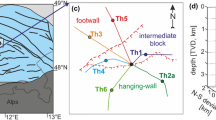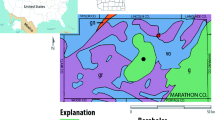Abstract
Throughout Africa, many communities rely on fractured crystalline basement rocks of Precambrian age as the primary source of water supply. The hydrogeology of these aquifers is often poorly understood, and boreholes are frequently sited and designed with little appreciation of the local fracture system. This is especially true in Uganda, where the role of fractures in determining well yield and relative importance of deep and shallow fracture zones have been a continous source of debate since a major national well drilling program was initiated over ten years ago.
Recent studies in Uganda have attempted to resolve outstanding hydrogeological questions through the implementation of one of the most comprehensive borehole fracture studies ever undertaken in continental Africa. During the study, 233 packer tests were carried out at 22 sites. Six of the sites, together with a further 16, were subjected to constant yield recovery tests. One well was tested before and after the deployment of yield-enhancing hydraulic fracturing techniques to investigate its effectiveness.
Study results reveal the presence of an extremely poor aquifer with little transmissive capability. Across the study area, the hydraulic conductivity of the bedrock average <10-7 m/s; the majority of transmissivity values are less than 1 m2/d. Packer tests show that fractures occur throughout the depth of well, but are usually very few in number and often exhibit a relatively low permeability. Most wells relied on a single permeable zone for most of their water. In approximately half of the boreholes tested, the most permeable zone was found to occur at the top of the uncased section, just below the regolith. No relationship was found between the distribution of boreholes with shallow, intermediate or deep, high yielding fracture zones and physiographic features. Neither was any relationship observed between hydraulic conductivity and depth within the upper 60 meters of rock tested. Notably, however, no fracture zones more permeable than 10-5 m/s were found below a depth 57m, and it is suggested that a depth of approximately 60m below ground level may represent the effective base of aquifer. Packer tests performed in a hydraulically fractured borehole confirmed increases in borehole transmissivity by a factor of about 3. The tests were also able to show where improvement in hydraulic conductivity was being achieved.
Resumé
Les études récentes en Ouganda ont tenté de répondre aux principales questions concernant l'hydrogéologie en réalisant l'une des études les plus complètes sur la fracturation dans les forages jamais entreprises en Afrique centrale. Cette étude s'appuie sur 233 tests avec packer menés sur 22 sites. Six de ces sites, puis 16 autres ont été soumis à des tests de rabattement à débit constant, puis à l'étude de la remontée. Un puits a été testé avant et après un développement par fracturation hydraulique pour déterminer l'efficacité de la méthode.
Les résultats obtenus montrent l'existence d'un aquifère très rédiut à faible transmissivité. Dans la région étudiée, la conductivité hydraulique du socle est en moyenne infériur à 10−7 m/s; la majorité des valeurs de transmissivité sont inférieures à 1 m2/j. Les tests avec packers montrent que les fractures sont présentes tout au long du puits, mais qu'elles sont en général très peu nombreuses et présentent une faible perméabilité. L'essentiel de la ressource de la plupart des puits provient d'une zone perméable unique. Dans près de la moitié des puits testés, la zone la plus perméable a été recoupée au sommet de la partie non tubée, juste sous le régolite. Il n'existe aucune relation entre la physiographie et la répartition des puits selon la position superficielle, intermédiaire ou profonde des fractures productrices. Il n'a pas été non plus observé de relation entre la conductivité hydraulique et la profondeur, dans la tranche de roche testée des 60 m supérieurs. Toutefois, aucune zone fracturée présentant une perméabilité meilleure que 10−5 m/s n'a été trouvée au-dessous de 57 m, ce qui permet de supposer que la base réelle de l'aquifère est à environ 60 m sous la surface du sol. Les tests avec packers effectués dans le forage développé par fracturation hydraulique montrent une amélioration de la transmissivité d'un facteur 3. Les tests ont aussi montré où s'était produite l'amélioration de la conductivité hydraulique.
Similar content being viewed by others
Author information
Authors and Affiliations
Rights and permissions
About this article
Cite this article
Howard, K., Hughes, M., Charlesworth, D. et al. Hydrogeologic Evaluation Of Fracture Permeability In Crystalline Basement Aquifers Of Uganda. HYJO 1, 55–65 (1992). https://doi.org/10.1007/s100400050029
Published:
Issue Date:
DOI: https://doi.org/10.1007/s100400050029




